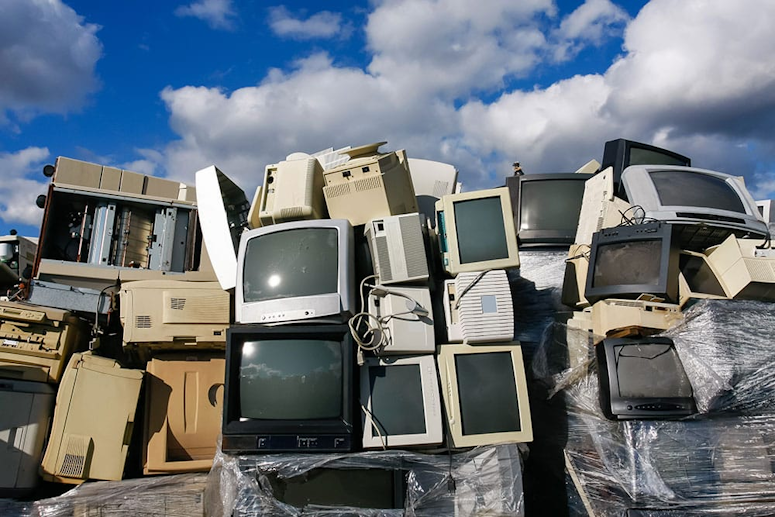E-waste keeps on rising
In 2019, the world produced the equivalent of mountain of electronic waste, according to a recent report from the United Nations University. Only a quarter of the metals they contain are recycled. A rate that drops to 1% for the rarest metals.
The figures are recent, but everything is already old in the report on waste electrical and electronic equipment (WEEE) recently published by the United Nations University. The new, first: we now have more precise data on our connected lifestyles.
In 2019, the world produced 53.6 million tons of WEEE. Each human being produces more than 7 kilos of it per year and this figure, up by almost 21% compared to 2014, is expected to increase by almost 15% by 2025. However, the report highlights that only 20% of the metals contained in WEEE go through official recycling channels.
The old one, then: apart from a few figures, we already knew all this. Already in 2011, the United Nations Environment Programme published a document highlighting the difficulties in reintegrating metals, particularly rare metals, into the circuits of the circular economy.
Eight years later, the quantities of WEEE continue to increase and the reprocessing of rare metals remains low. According to the latest data provided by the European Commission, we recycle barely more than 1% of the barite, beryllium, cobalt, gallium, indium, phosphorus, tantalum and silicon that we consume…
Recycling is a factor in securing industrial supplies
And yet, what fabulous advantages American manufacturers could gain from a dynamic recycling sector! This would give them an embryo of security of supplies while China – which holds a preponderant share of the production of these resources – intends to retain control over them.
Japan, poor in its subsoil, was the first to understand that its electronic trash cans are worth gold. Following an embargo on rare earths decreed by Beijing in 2010, it initiated an ambitious policy of collecting and reprocessing WEEE. In Tokyo, a Japanese diplomat even tried to convince people that there is a geopolitics of recycling since by having the best patents, the Archipelago would make other States dependent on its technological processes.
In the West, it is more complicated… The recycling of rare metals – often horribly complex alloys to “unalloy” – turns out to be an expensive process. Also, xxx manufacturers prefer to supply themselves from the mine, more competitive than recyclers. The recovery of WEEE is therefore less of a technological challenge than an economic one, and nothing will change before the volumes of accumulated WEEE allow for the generation of economies of scale.
Alas! E-waste is too often shipped from the United States to Africa and China, in contradiction with the Basel Convention which prohibits the export of hazardous waste, labeled “second-hand equipment” or “humanitarian aid”… And future generations will perhaps say of us: “Our ancestors of the 21st century? Oh yes! Those guys who took rare metals out of one hole and put them back in another hole”.
How to use a dumpster rental service to discard e-waste
Using a dumpster rental service to discard e-waste efficiently and responsibly involves several is a way to be environmentally friendly.
First identify a reputable rental company that explicitly handles e-waste. Such junk disposal companies will often provide specialized containers designed to safely store and transport electronic waste, ensuring compliance with local environmental regulations.
Before renting the dumpster though, assess the volume of e-waste you need to discard to determine the appropriate dumpster size. Common e-waste items include old computers, televisions, printers, mobile phones, and other electronic devices. It is required to separate e-waste from regular trash, as electronic components contain hazardous materials like lead, mercury, and cadmium, which require careful handling and disposal. E-waste is considered hazardous waste!
Once the dumpster is delivered to your location, carefully load the e-waste, avoiding damage to any items that could release some of these hazardous products. Many container rental services will provide you with guidance on proper packing to maximize space and ensure safety. After filling the dumpster, contact the rental company to schedule the pickup.
The waste management company will then transport the e-waste to a certified recycling facility. These local facilities will disassemble the electronics, recovering valuable materials and safely disposing of hazardous components. By using a dumpster rental service as described above, you will make the e-waste disposal process simpler, contributing to environmental conservation and compliance with legal disposal standards in your area.

